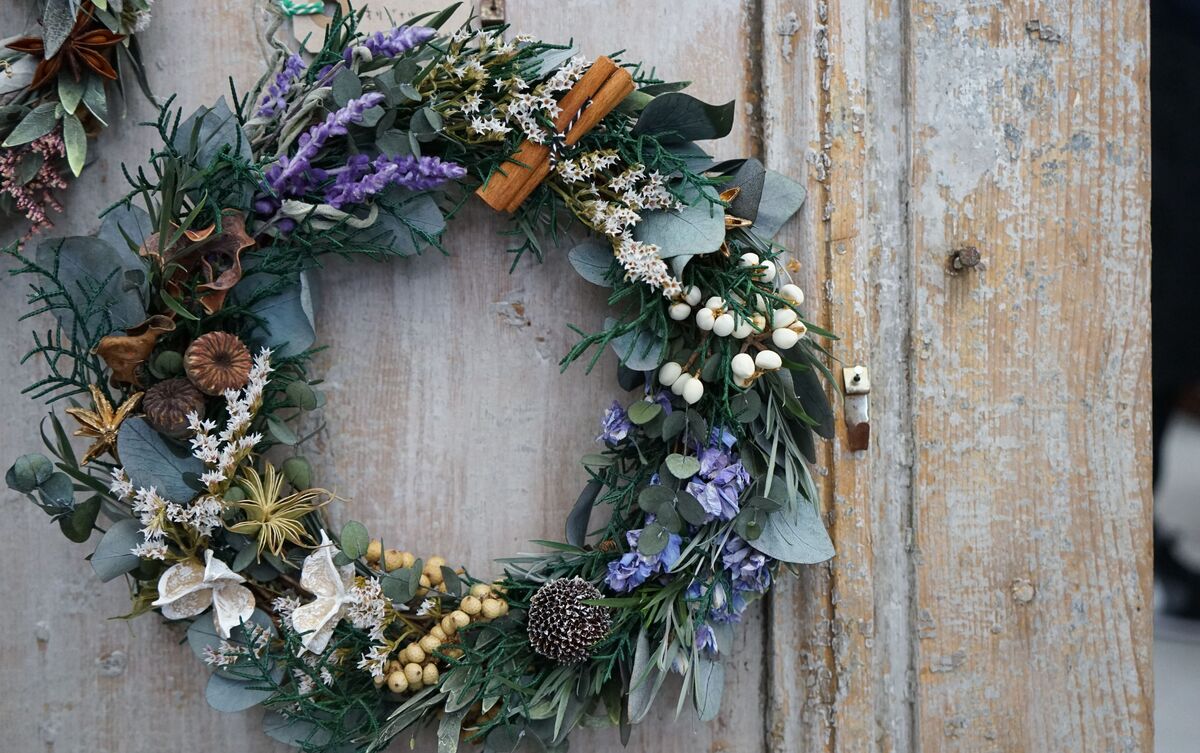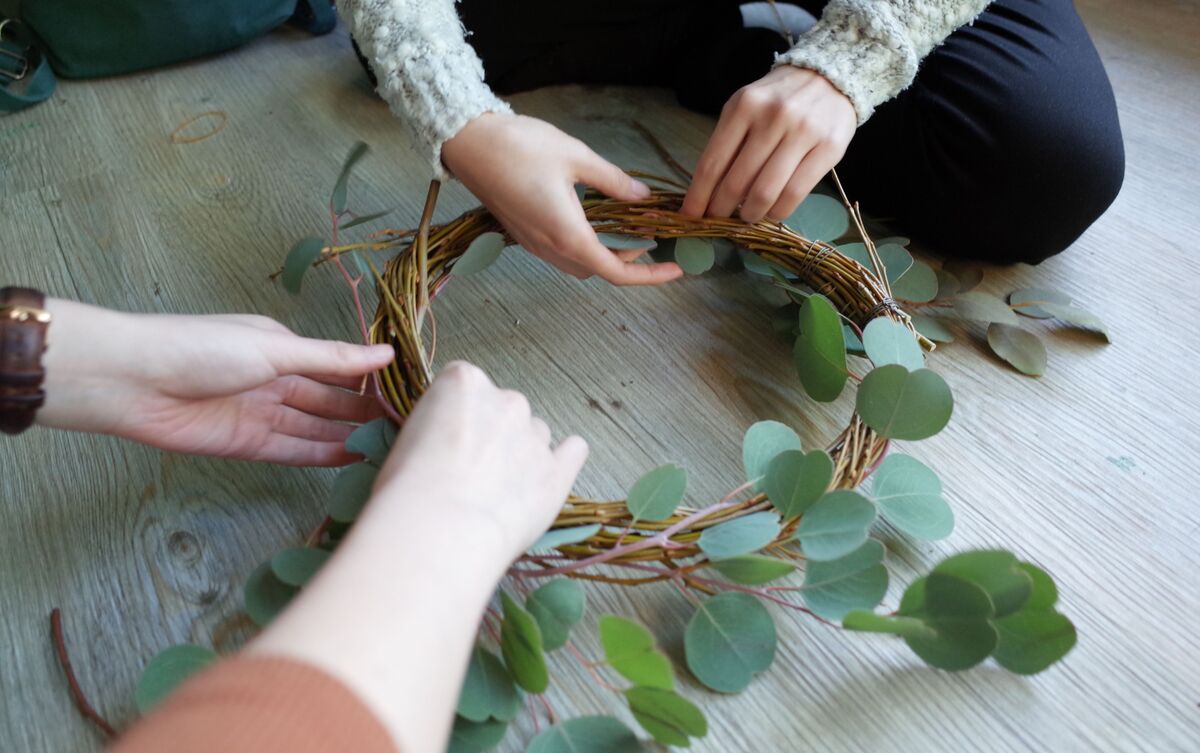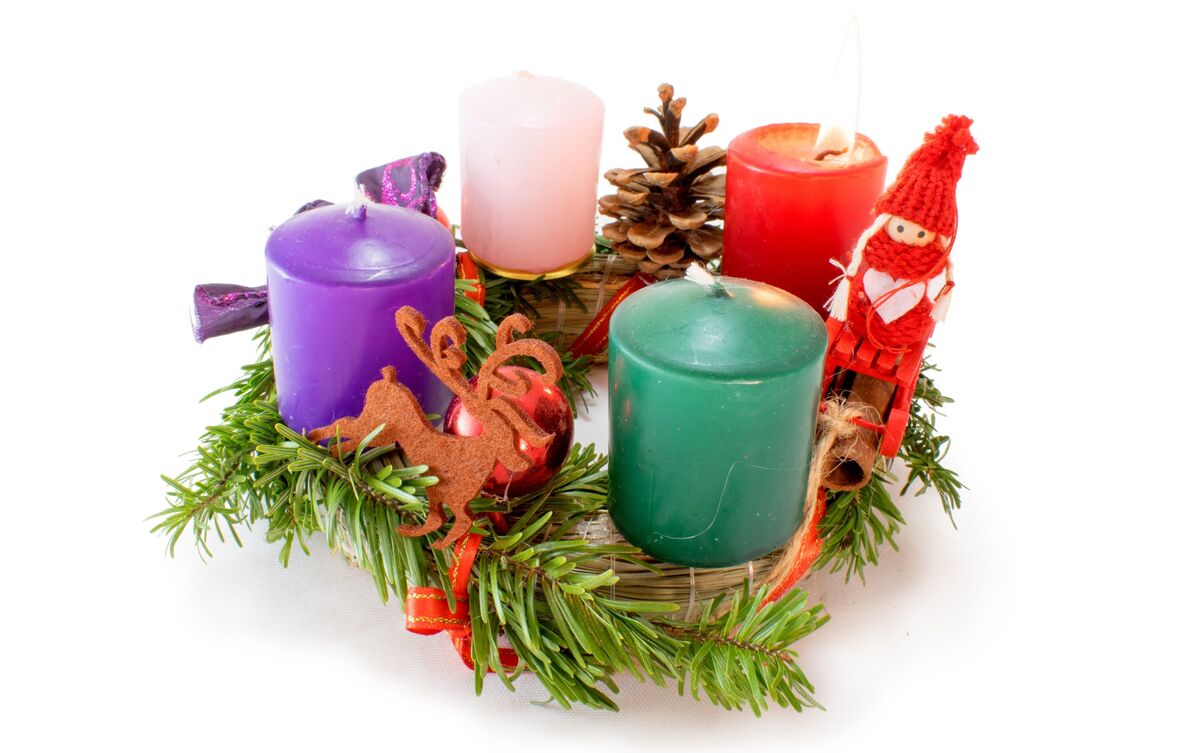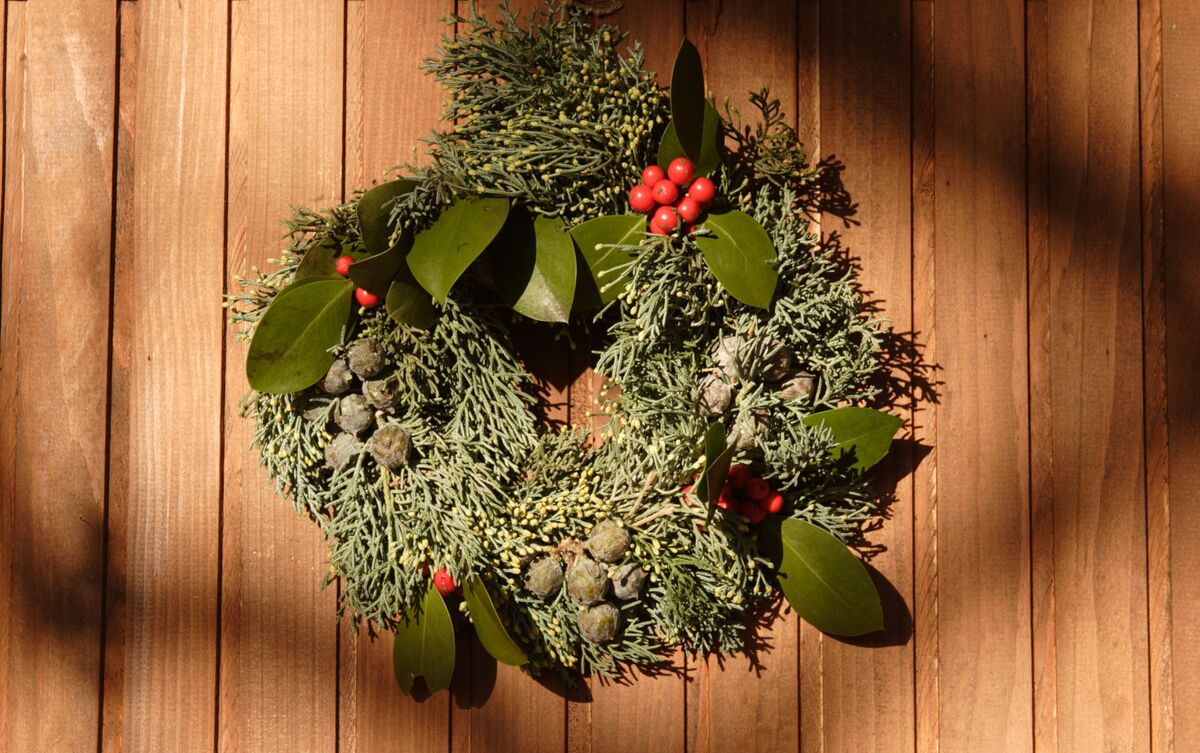Table of contents
The meaning of Christmas wreath

One of the symbols of Christmas, the garland represents luck and is hung on the door as an invitation to the Christmas spirit. Because it is a tradition that has existed for many years, it is possible that there are other meanings for this ornament.
It is believed that the garland can also be seen as the crown worn by Jesus Christ when he was crucified, with the flowers representing the thorns and the red berries, the drops of blood. In addition, it is made in the shape of a circle, as it refers to the movement of the solar system, which waits for a new cycle.
In this article, you will be able to understand a little more about the symbolism and history of the Christmas Garland. Check it out!
Understanding the Christmas Garland

Although it may look like just an ornament of branches and flowers, garlands represent much more than that. The faithful, especially, believe that they are loaded with meanings and that placing them at the door during the Christmas holidays will bring very positive results. To learn more about these decorations and what they represent, continue reading the following session!
Source
The tradition of using garlands originated in Rome, well before the birth of Jesus Christ. At that time, the Romans believed that giving someone a plant branch brought health. In addition, they had the custom of celebrating the solstice, a pagan festival, which also took place at the end of the year. At that time, they would present their friends and neighbors with garlands made from freshly cut branches.
On the other hand, when the Christian Catholic Era began, people found it difficult to continue with the garlands on their doors and, consequently, the tradition was interrupted, for a long time. It was only in the Middle Ages that people started to leave the garlands on the doors, all year long, because they believed that it could protect them against any evil.
History
Believers in superstitions, people believed that ivy, pine, holly and other plants offered protection against witches and demons in winter, as well as chaining bad luck. This was one of the reasons why they began to believe that green branches brought happiness and that the circular shape of the garland represented hope, since it reminds that life is a cycle of birth anddeath.
Catholics, in turn, believe that the Garland is part of the celebration of Advent - the period that includes the 4 Sundays preceding the birth of Christ - and that it works as a preparation of the soul for that time of year.
Every Sunday of this period until Christmas day, a candle must be lit, and each one of them receives a different meaning. That is why some elements make the wreath a symbol full of meanings. The light of the candles represents the light of God, which comes to fill our lives with blessings.
The idea of lighting candles came about because of the winter period in Europe, when there was hardly any sunlight.
Advent Crown

The Advent Crown is circular in shape, symbolizing God's eternity, and has no beginning or end. It is made of green branches and candles of the following colors: pink, purple, white and green.
The Advent Crown is traditionally considered as "the first announcement of Christmas". It is in this atmosphere of "arrival" that we experience one of the most significant liturgical moments of the Church, the birth of the baby Jesus. Below, learn more about the Advent Crown and its ritual!
How to do the Advent Crown ritual?
Normally, the Advent Crown is made of green branches on which four candles are placed: three purple and one pink. The green branches can be interspersed with a red ribbon. When it is ready, the Crown symbolizes and communicates that in that church, home, office or wherever it may be, live people who are preparing with joy to celebrate the coming of the baby Jesus into the world.
Since it has been a tradition for many years, people tend to innovate and recreate the Advent Crown according to their beliefs. There are those, for example, who choose the following ritual: 4 candles, one green (on the 1st Sunday), one purple (on the 2nd), one red and one white (on the 3rd and 4th, respectively).
Meaning of Advent Candles
Candles serve to illuminate the vigil of Advent, the preparation for the coming of the light into the world. The light, in this case, is considered to be Jesus Christ. In addition, they communicate the joy of life that comes from God, who goes beyond the limits that worldly reality imposes.
Each of the candles has its own meaning for ritual and religion.
Meaning of the Purple Advent Crown Candle
The purple candle, during the passage of Advent, indicates the joy of the Lord's arrival. Used on the 2nd Sunday, it reveals that God's arrival is ever closer and is a symbol of hope for the faithful. Interestingly, it can also symbolize the faith of Abraham and the other patriarchs who were told of the Promised Land.
Meaning of the pink candle of the Advent Crown
The pink candle in the Advent Crown represents the joy of King David, this one who symbolizes Messiah, because he gathered under his reign all the peoples of Israel, just as Christ will do in himself, with all the children of God.
Thus, the Sunday of joy is represented and this candle has a more vivid color.
Meaning of the white candle of the Advent Crown
As we know, white represents peace and purity. The candle in the Advent Crown could not represent anything else. Besides showing purity, it also symbolizes the light of the Virgin Mary on the arrival of her son, Jesus Christ.
Meaning of the green color of the Advent Crown
The green in the Advent Crown represents hope, which is renewed with the coming of the Prince of Peace. In addition, it may represent the faith of the Patriarchs Abraham, Isaac and Jacob, since they believed in the Promise of the Promised Land, the Canaan of the Hebrews. From there, the Savior, the Light of the World, would be born.
What is the significance of the Christmas Garland nowadays?

Although many years have passed, the tradition of the Garland has not changed. It is common for people to place their Garlands at the door every Christmas.
In addition, what this Christmas ornament represents and means has not changed either. There is still a belief that it represents peace, prosperity and new beginnings. If you believe in the power of garlands, it will be a good idea to have one of these at home next Christmas.

